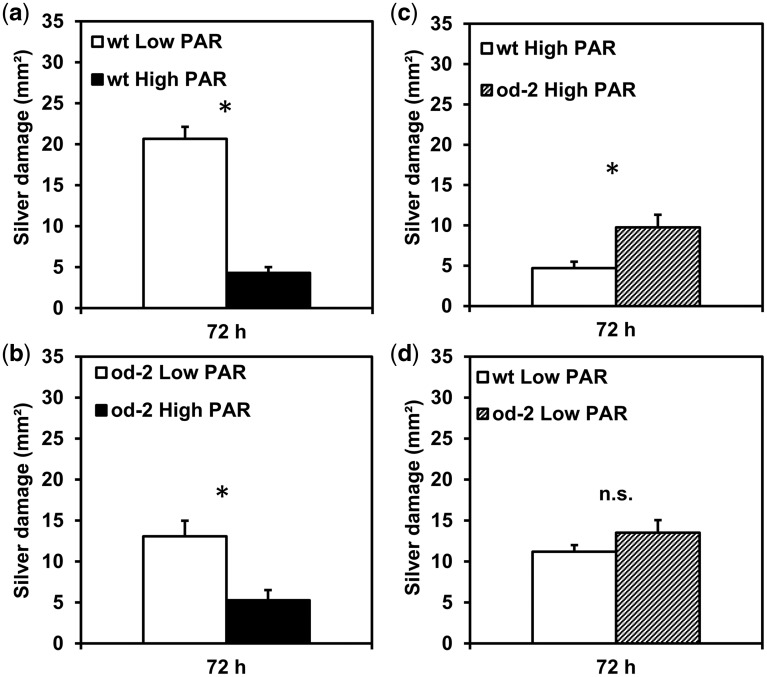Fig. 2.
Feeding preference of the Western flower thrips F. occidentalis for low and high PAR-treated wild-type (wt) and odorless-2 (od-2) plants tested in leaf disc dual-choice bioassays. Leaf discs were taken from leaflets belonging to the third/fourth youngest leaf at 35 d after initial light treatments. Silver damage (mean � SEM, n = 25–30) caused by thrips feeding was evaluated at 72 h after thrips release in the following pair-wise comparisons: (a) low PAR vs. high PAR-treated wild-type plants; (b) low PAR vs. high PAR-treated od-2 plants; (c) high PAR-treated wild-type vs. high PAR-treated od-2 plants; and (d) low PAR-treated wild-type vs. low PAR-treated od-2 plants. Pooled data from three independent experiments were analyzed. Asterisks denote significant differences tested by Wilcoxon signed rank test (P ≤ 0.05). n.s. = not significant.

